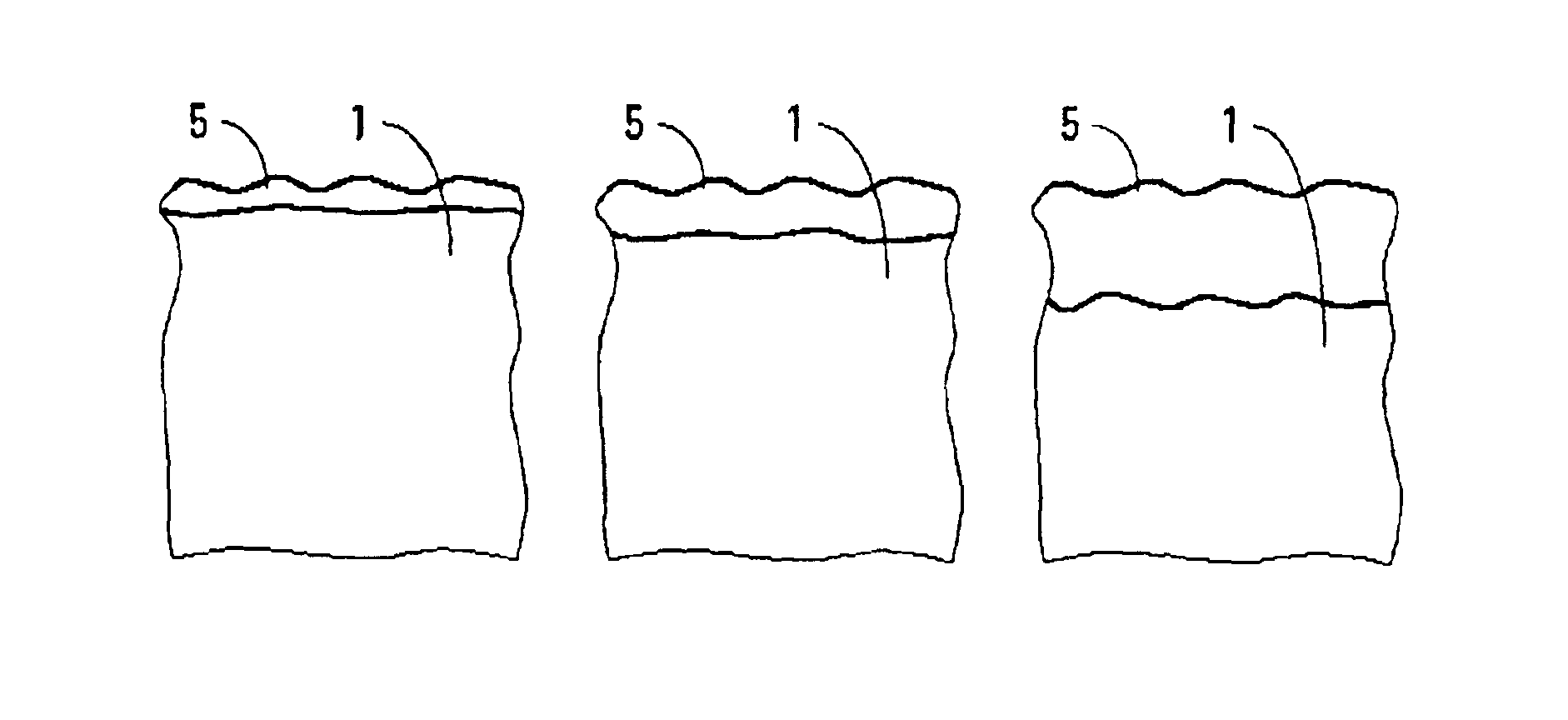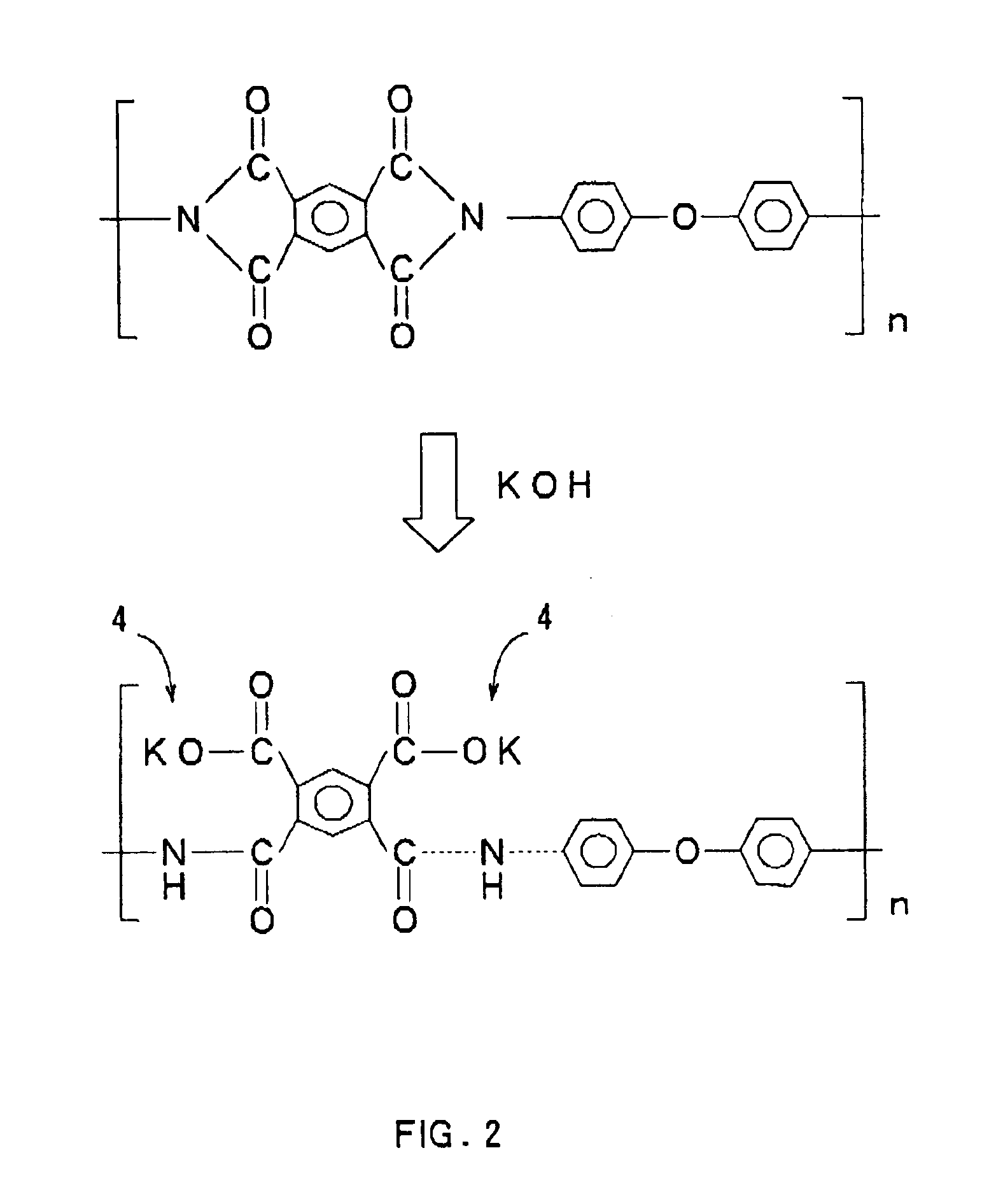Production method for flexible printed board
a printing board and flexible technology, applied in the direction of superimposed coating process, liquid/solution decomposition chemical coating, insulating substrate metal adhesion improvement, etc., can solve the problem of not exceeding 12 m of copper foil thickness, insufficient surface modification of polyimide resin film by plasma treatment alone, poor heat resistance of the adhesive layer of such a flexible printed board of three-ply laminate structure, etc. problem, to achieve the effect of improving workability, high adhesion of copper, and easy continuous production
- Summary
- Abstract
- Description
- Claims
- Application Information
AI Technical Summary
Benefits of technology
Problems solved by technology
Method used
Image
Examples
example 1
[0035]A flexible printed board was produced in the following manner by forming a copper layer on a surface of a polyimide resin film by plating.
Plasma Treatment
[0036]First, a 20 cm×20 cm polyimide resin film (KAPTON 100EN available from Toray Du Pont Co., Ltd.) was set in a normal pressure plasma treatment device (AP-T01 available from Sekisui Chemical Co., Ltd.), and a surface of the polyimide resin film was plasma-treated. At this time, air was employed as the gas, and the flow rate thereof was 20 l / min. The output was 100 W, and the treatment period was 30 seconds.
Activation
[0037]The surface of the polyimide resin film was activated at 25° C. for two minutes with the use of a 50 g / l (1.25 mol / l) sodium hydroxide aqueous solution, whereby an activated layer 5 having a thickness of 52 nm was formed (see FIG. 3(b)).
Application of Catalyst and Reduction Treatment
[0038]A catalyst (OPC-50 INDUCER available from Okuno Chemical Industries Co., Ltd.) was applied onto the surface of the po...
example 2
[0040]A flexible printed board was produced in substantially the same manner as in Example 1, except that argon was employed as the gas for the plasma treatment.
example 3
[0041]A flexible printed board was produced in substantially the same manner as in Example 1, except that nitrogen was employed as the gas for the plasma treatment.
PUM
| Property | Measurement | Unit |
|---|---|---|
| thickness | aaaaa | aaaaa |
| temperature | aaaaa | aaaaa |
| thickness | aaaaa | aaaaa |
Abstract
Description
Claims
Application Information
 Login to View More
Login to View More - R&D
- Intellectual Property
- Life Sciences
- Materials
- Tech Scout
- Unparalleled Data Quality
- Higher Quality Content
- 60% Fewer Hallucinations
Browse by: Latest US Patents, China's latest patents, Technical Efficacy Thesaurus, Application Domain, Technology Topic, Popular Technical Reports.
© 2025 PatSnap. All rights reserved.Legal|Privacy policy|Modern Slavery Act Transparency Statement|Sitemap|About US| Contact US: help@patsnap.com



